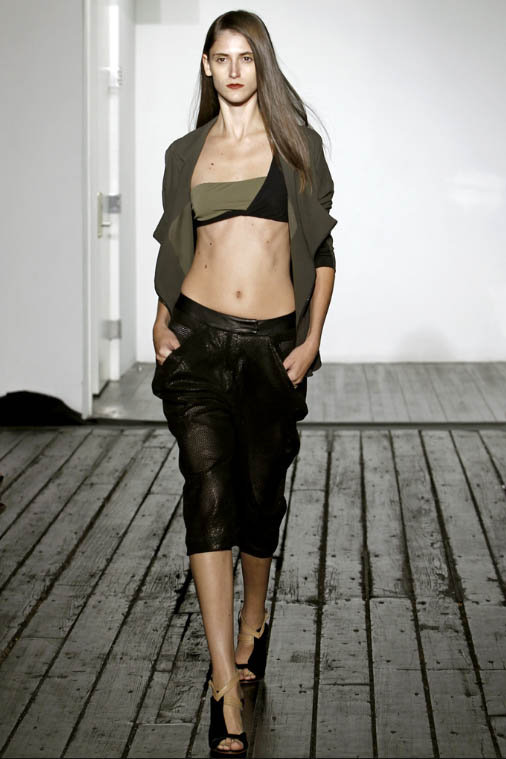






























For Spring, Maria Cornejo had ideas about cultural displacement, heritage, and the search for identity.
www.zeromariacornejo.comNewYorkFashion WeekFashion Brand
For Spring, Maria Cornejo had ideas about cultural displacement, heritage, and the search for identity.
NEW YORK, September 13, 2010
By Meenal Mistry
For Spring, Maria Cornejo had ideas about cultural displacement, heritage, and the search for identity. That's not just the usual designer hyperbole. The Chilean-born Cornejo landed in Manchester, England, as a political refugee and has lived in London, Paris, Milan, Tokyo, and New York. "I always feel that I have all these cultures pulling at me," she said backstage before today's show. Yet, Cornejo has actually sublimated this global swirl—in broad terms, Continental chic with an Asian simplicity and a London girl's irreverence—into a subtle but powerful fashion culture of her very own. It's one that shifts and evolves each season.
The first look out —an all-navy ensemble of a sharply pleated silk top and slim trousers—set a tone of amped-up elegance and suggested a new lightness in Cornejo's codes. The pointy architectural drapes at the hips of her finely tapered pants and jumpsuits fell more softly, and the asymmetric piecing on color-blocked dresses had an intuitive grace. The heritage most apparent here was the designer's own. The cut-out lapel on a drapey black blazer is just the sort of smart detail that gets Cornejo's cult a-shopping, as do the prints on her ever-flattering dresses. This season there was a cool, abstracted close-up of burlap and a languid, painterly marble motif.
The designer recently added Los Angeles to her roster, opening a 2,000-square-foot store on Melrose Place. Was the new locale an influence? "The only thing is I wanted was more beachy dresses," she said. Oceanside is surely the perfect spot for the pop bright tribal print that made an appearance on a small grouping of looks. Then again, the growing population of Cornejo country could take it anywhere.